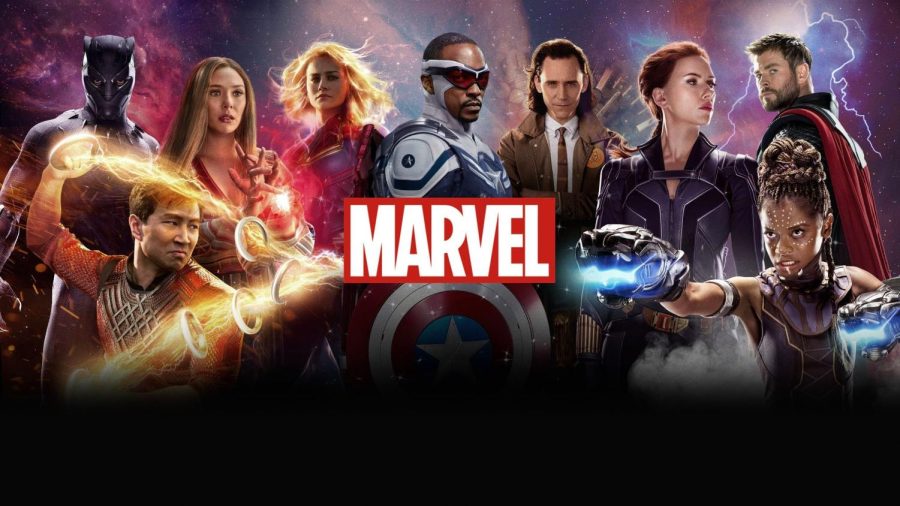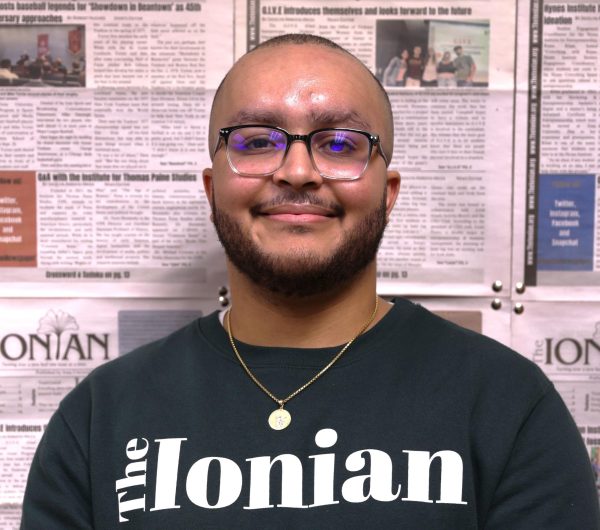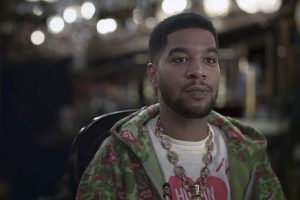Throwback corner: Marvel Studios’ Phase 4 ends with its heroes showing they can’t always escape painful realities
Marvel Phase 4 featured characters
May 4, 2023
Following a considerably traumatic conclusion to its decade-long series of movies in “Avengers: Endgame,” Marvel Studios faced the challenge of moving on from an impactful finish to one part of their story to telling a very important one after – showcasing how not even superheroes are able to avoid real-life situations and feelings.
Using “Endgame” as a reset button, Marvel Studios used the fallout to reflect upon the losses and grief that heroes would feel in their universe going forward in Phase 4 instead of telling the typical hero-versus-villain story. However, these same themes were felt in our lives with the onset of the COVID-19 pandemic. Although the studio decided on its direction going forward, their plans were affected by the pandemic, as well as real-life issues they’d incorporate into their stories such as the Black Lives Matter dialogue, political unrest, mental health and the loss of Black Panther actor Chadwick Boseman. The studio’s portrayal of these issues helped the characters’ pain feel relatable to our pain at the time.
The first Phase 4 project that explored themes of loss and grief was “WandaVision” on Disney+, which featured Elizabeth Olsen’s Wanda Maximoff exploring the anguish she felt following the previous two Avengers movies where her partner Vision, played by Paul Bettany, died. This is when Maximoff, after losing everyone she’d ever loved, finally reached her tipping point Throughout the show, Wanda showcased grief in a relatable way to the audience. She t constantly questioned the morality of what she was doing and struggled with acceptance until she finally moved on.
While mental health conversations became prominent during the pandemic, so did heightened racial discourses as Disney+ series “The Falcon and the Winter Soldier” explored the themes of loss and grief with strong Black Lives Matter dialogue.
The idea of the system being against him affects Wilson so much that although Steve Rogers, a white man who was previously Captain America, gave him his star-spangled shield to carry the mantle forward, Wilson gave the shield to the government because he didn’t feel deserving of the position.
As the show progresses, Wilson realizes that he deserves to carry the Captain America mantle and deal with the burdens of doing so, such as other Black citizens looking down on him for wanting to represent what America stands for and his white peers not accepting his ability to do so as well.
As Marvel Studios was closing its chapter on Phase 4, they decided to conclude with “Black Panther: Wakanda Forever,” which addressed the very real loss and grief felt around the world as it pertained to the death of lead actor Chadwick Boseman. The news of Boseman’s death was felt around the world, as many felt they lost a real-life hero who represented them on the big screen.
In honoring the life of Boseman, the movie’s sequel made sure to capture the void of his presence through the lens of his character’s sister who struggled with the loss of her brother in a similar way in the film. Furthermore, the sorrow portrayed by the rest of the cast transcended the Marvel Universe as it made the audience relive Boseman’s death while also evoking the emotions of an audience who’ve also lost people in their lives.
Throughout Phase 4, Marvel has showcased how considerably different its movies have become over time. Marvel Studios took a deep dive into grief and used its platform to show us the most devastating feelings that mankind can face, blurring the lines between what is very much a fictional universe and the real world as we know it today.









